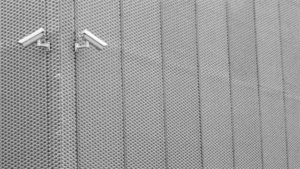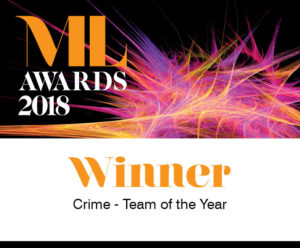 A critical evidential issue for courts is how much weight to place upon visual identification evidence where that evidence is weak or based on a very brief encounter.
A critical evidential issue for courts is how much weight to place upon visual identification evidence where that evidence is weak or based on a very brief encounter.
You would think that the usual rules apply regarding the jury’s verdict; if they are not sure that the defendant has been properly identified as the perpetrator then the correct conclusion is ‘not guilty’.
That is true to a certain extent but extra safeguards, known as the ‘Turnbull guidelines’, will come into operation in identification cases to act as a safeguard against placing too much weight on evidence of this type.
We know from our own life experience that identification evidence is often wrong.
When a direction is needed
Where the prosecution case rests wholly or substantially on identification evidence the judge must warn the jury about the dangers present. This warning will take the form of a prescribed direction given to the jury which describes the dangers of this type of evidence.
What direction will a jury be given?
A jury (or magistrates) will be told the following:
(1) There is a need for caution to avoid the risk of injustice;
(2) A witness who is honest and convinced in his own mind may be wrong;
(3) A witness who is convincing may be wrong;
(4) More than one witness may be wrong;
(5) A witness who is able to recognise the defendant, even when the witness knows the defendant very well, may be wrong.
The jury should be directed to put caution into practice by carefully examining the surrounding circumstances of the evidence of identification, in particular:
(1) The time during which the witness had the person he says was D (defendant) under observation; in particular the time during which the witness could see the person’s face;
(2) The distance between the witness and the person observed;
(3) The state of the light;
(4) Whether there was any interference with the observation (such as either a physical obstruction or other things going on at the same time);
(5) Whether the witness had ever seen D before and if so how many times and in what circumstances (i.e. whether the witness had any reason to be able to recognise D);
(6) The length of time between the original observation of the person said to be D (usually at the time of the incident) and the identification by the witness of D the police (often at an identification procedure);
Any flaws in the identification evidence must be drawn to the attention of the jury, for example those arising from one or more of the circumstances set out above, such as:
(1) The fact that an incident was unexpected/fast-moving/shocking or involved a (large) number of people so that the identifying witness was not observing a single person;
(2) Anything said or done at the identification procedure including any breach of Code D.
(3) Whether there is any significant difference between the description the witness gave to the police and the appearance of D.
Evidence which is capable and, if applicable, evidence which is not capable of supporting and/or is capable of undermining the identification must be identified.
The jury may also use evidence of description, if they are sure that it comes from a witness who is honest and independent, as support for evidence of identification given by an/other witness/es.
Where more than one witness gives evidence of identification the jury should be told that they must consider the quality of each witness’ evidence of identification separately and must have regard to the possibility that more than one person may be mistaken. However, as long as the jury are alive to this risk, they are entitled to use one witness’ evidence of identification, if they are sure that that witness is honest and independent, as some support for evidence of identification given by an/other witness/es.
Consequences of missing or bad directions
Failing to provide a Turnbull direction when necessary or providing an insufficient one can cause a subsequent conviction to be rendered unsafe. The exact danger with identification evidence was highlighted in Bentley (1994) 99 Cr App R 342 where the Lord Chief Justice pointed out that one can feel not merely fairly confident but absolutely sure of seeing a friend or relative, only to discover that it happened to be a convincing lookalike.
Case studies
Other situations which seem analogous to the example encounter mentioned above may not be caught by the Turnbull provisions, such as the identity of a particular individual within a number of persons who are well-known collectively: Oakwell [1978] 1 All ER 1223.
Nor do the principles apply to picking out a particular object such as a car, though the judge may draw this to the jury’s attention for different reasons: Browning (1991) 94 Cr App R 109.
In the most serious cases of problematic identification evidence, a trial may simply have to be stopped.
This will most commonly occur where there is no evidence supporting someone’s purported identification of the wrongdoer, especially if the person making that identification cannot be absolutely sure of who it was (although even then there are rules in relation to what are known as ‘qualified identifications’).
How we can help
As you will have seen from the above article, which is in fact only a very short summary of the relevant principles, identification is one of the most complex evidential topics, and our expertise in this area is designed to ensure such evidence is tested to the limits.
If you have further questions about identification evidence, how the court protects against unreliable evidence of this kind and/or how this relates to your case, please contact one of our Solicitors on 0161 477 1121 or email [email protected]


